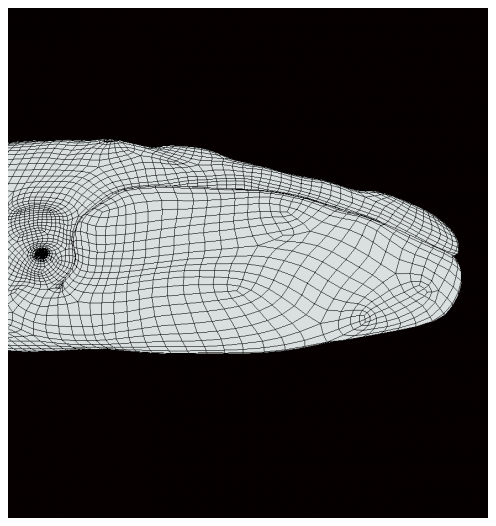Megafauna such as sharks, sea turtles and whales are widely and intensively studied for the sake of conservation and ecology becasue of their importance in modern ecosystems. Together with a range of partners, we are actively investigating methods to better understand the body shape and body condition of these elusive animals to better understand their health and standing in modern ecoystems. We use a wide range of hardware and software approaches to attack this problem, and we use the goal of non-invasive conservation technology as a guide for our research.
Toegether with a wide range of partners, including Fredrik Christiansen (Aarhaus University), Neil Hammerschlag (Univ. Miami), Jeanette Wyneken (Florida Atlantic Univ.), Edd and Annabelle Brooks (Cape Eleuthera Institute), and Jeremy Goldbogen and Paolo Segre (Stanford University), our group is investigating a wide range of questions involving body shape and condiiton in sharks, marine mamamls and terrestrial mammals. Body shape exterts a significant influence on movement in marine megafauna, and impacts energetics, migration patterns and survival. Further, body shape impacts a wide range of functional aspects, such as feeding and locomotion. At the same time, becasue marine megafauna often move such long distances, their body condition greatly impacts their overall health. However, how to estimate body condition in elusive, large marine megafauna is challenging, but new hardware (i.e., drone) and software (i.e., machine learning) is providing new avenues to study these topics. We are developing new ways to quantify body condition in these animals by using these new innovations, with an emphasis on novel 3D modelling techniques and software. At the same time, we are also interested in linking condition to movement and migration patterns, which will hopefully provide insight into why these animals move to certain areas.
Representative Publications
Hammerschlag, N, Luo J, Irschick DJ, Ault JS. 2012. A comparison of spatial and movement patterns between sympatric predators: Bull sharks (Carcharhinus leucas) and Atlantic Tarpon (Megalops atlanticus). PLOS ONE. 10.1371/journal.pone.0045958.
Gallagher AJ, Wagner DN, Irschick DJ, Hammerschlag N. 2014. Body condition predicts energy stores in apex predatory sharks. Conservation Physiology. DOI: 10.1093/conphys/cou022.
Irschick DJ, Hammerschlag N. 2014. A new metric for measuring condition in large apex sharks. Journal of Fish Biology. 85:917-926.
Irschick DJ, Hammerschlag N. 2014. Scaling of morphology in four divergent shark species. Biological Journal of the Linnean Society. 114:126-135.
Gallagher AJ, Hammerschlag N, Cooke SJ, Costa DP, Irschick DJ. 2015. Using evolutionary theory as a tool for predicting risk of extinction. Trends in Ecology and Evolution (Cover). 30:61-65.
Fu A, Lauder G, Wilga C, Hammerschlag N, Irschick DJ. 2016. Ontogeny of head and caudal fin shape of an apex marine predator: the tiger shark (Galeocerdo cuvier). Journal of Morphology. DOI: 10.1002/jmor.20515 (Cover).
Hammerschlag N, Barley SC, Irschick DJ, Meeuwig J, Nelson ER, Meekan MG. 2018. Human-driven predator declines in the wild cause morphological changes in prey. Marine Ecology Progress Series. 586:127-139.
Hammerschlag N, Skubel R, Sulikowski J, Irschick DJ, Gallagher A. 2018. A comparison of reproductive and energetic states in a marine apex predator. Physiological and Biochemical Zoology. 4:933-942.
Moyer J, Shannon S, Irschick DJ. 2019. Bite Performance of the Sand Tiger Shark, Carcharias taurus. Journal of Fish Biology. DOI: https://doi.org/10/1111/jfb.14086
